Looking back is a bad dream, looking forward we are hopeful
As the Rohingya refugee crisis unfolded on our TV screens and social media feeds, none of us could quite imagine the sheer horrors witnessed by hundreds of thousands of people who continued to risk their lives, crossing the border between Myanmar and Bangladesh during every minute of every night and day. Sights of thousands of women, children and elderly on foot continued until December 2017.
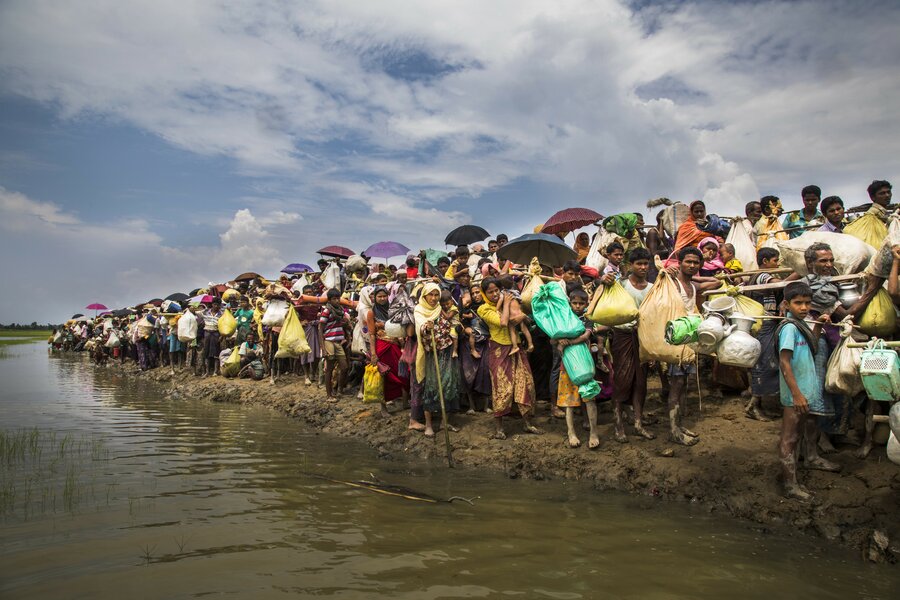
I had no idea what this emergency would reveal when I arrived in Cox's Bazar in Bangladesh. The airport was crammed full of people bringing relief supplies — newly staffed NGO workers and people eager to do whatever they could to help.
Lines and lines of people waiting patiently for relief supplies and food is my memory of day one in the camp.
Like many of those fleeing Myanmar, survivors and refugees settled into the side of muddy, steep hills for safety. Families were given food provided by my colleagues from the World Food Programme (WFP).
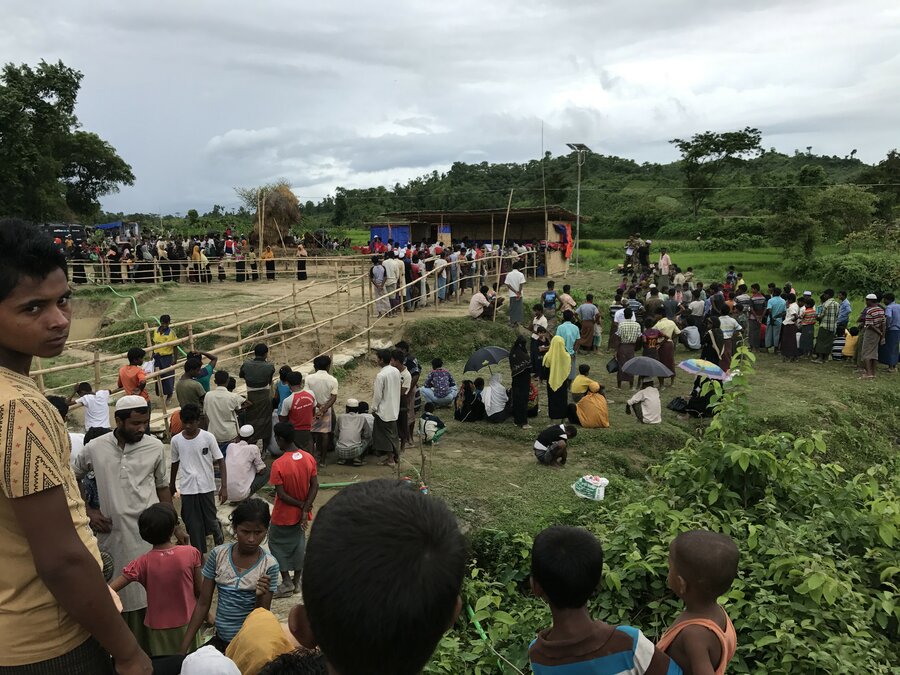
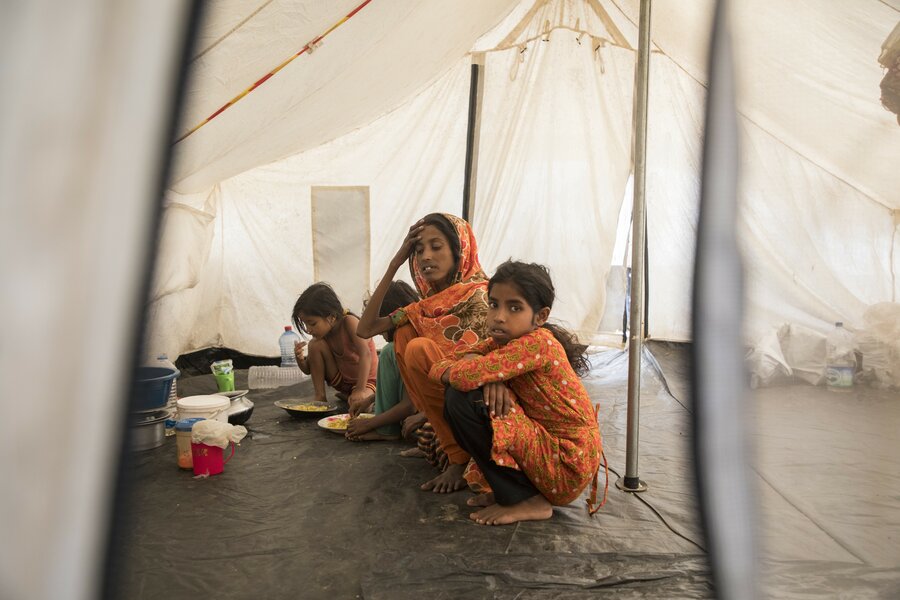
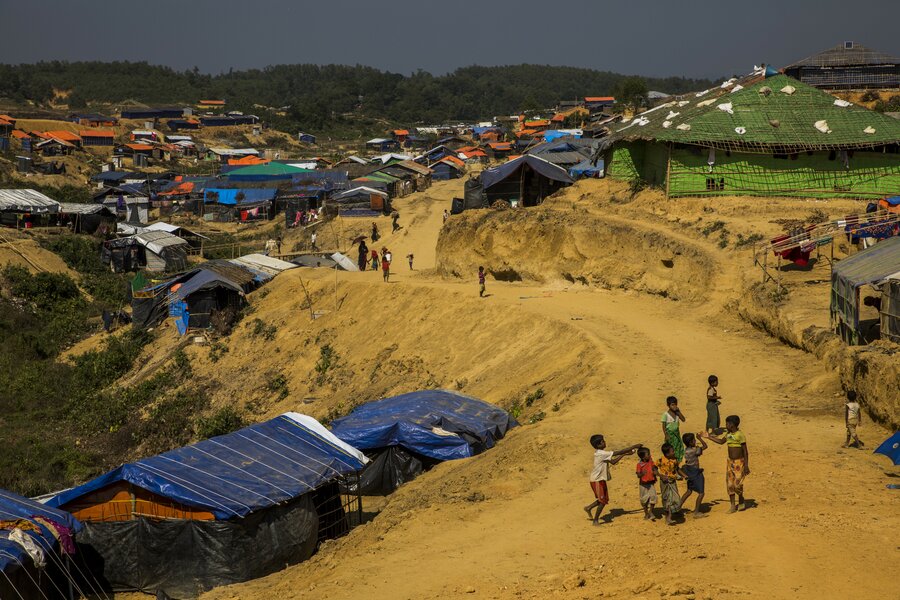
As the numbers of refugees continued to grow, so did the mega camp. I would travel pretty much every day to the camp and every day would see new settlements forming.
From day one of this crisis, WFP has been supplying nutrient-rich biscuits to new arrivals and feeding registered residents with regular distributions of rice, vegetable oil, and lentils. We have also been providing hot meals through community kitchens and delivering supplemental nutrition to pregnant women, breastfeeding mothers, and young children.
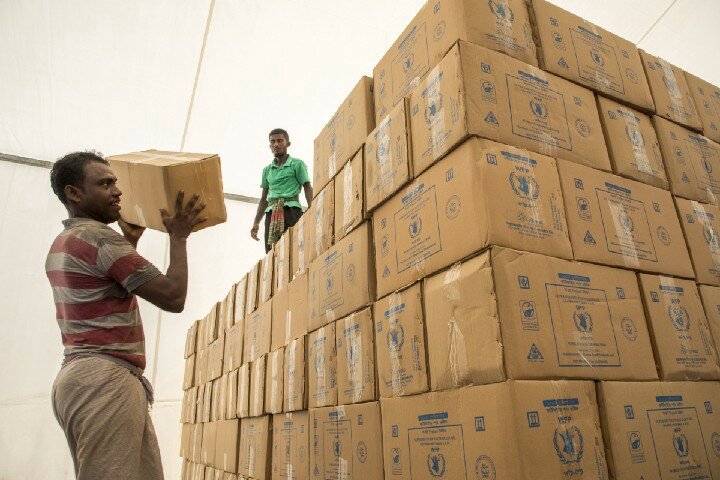
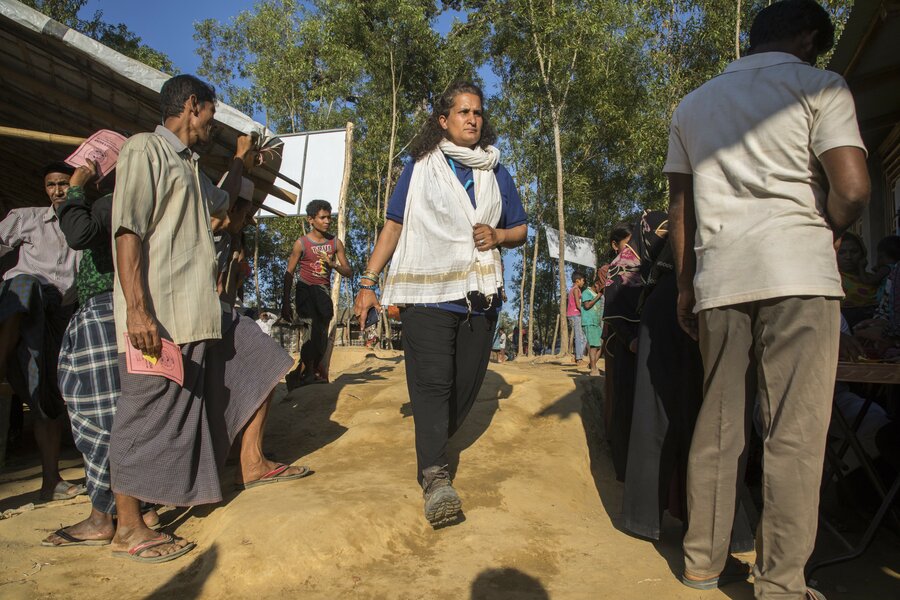
The Rohingya here are safe from persecution, but the threat of illness and malnutrition pursues them. We are reminded of this every day as we comb the camp to check on families receiving WFP support. The sight of young children playing barefoot in filthy water, or wading in streams flowing with human waste, is ubiquitous. Deep water wells, drainage and toilets have been constructed, and hundreds of thousands of hygiene kits and water purification tablets have been distributed to help improve access to clean water and reduce the risk of outbreaks of waterborne disease.
I often get asked by people how can we help? What can we do for the Rohingyas?
WFP operations are critically underfunded and we urgently need US$ 110 million through January 2019 to make sure we can continue to feed more than 860,000 people a month, and prevent malnutrition from taking hold. But with the depth of the suffering increasing, the need for resources grows by the day.
WFP also needs more funding to sustain its operations to help vulnerable people in Myanmar. WFP programmes have a stabilizing effect — without food assistance, it is possible even more people will leave.
One of the most interesting experiences about working in Cox's Bazar has been being able to see WFP's ability to adapt to new crises. We recognized early on that refugees' shelters are susceptible to flooding and landslides. In a partnership between IOM, WFP and UNHCR, the Site Maintenance Engineering Project (SMEP), worked to make new land provided by the government of Bangladesh safer. This has helped allow the relocation of over 24,000 people most at risk from landslides and flooding.
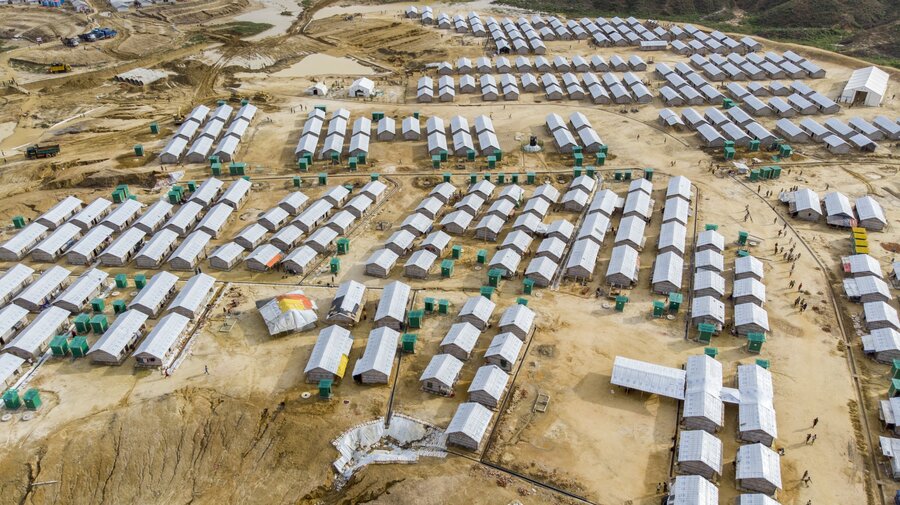
I was recently back in Camp 4 and met Chamunda Khantun and her two pet rabbits. Chamunda arrived in Bangladesh after walking 15 days from Myanmar. She had to leave everything behind and arrived with her family and one dress. But she smiles and giggles when she shows me her pet rabbits. They make me feel calm she tells me.
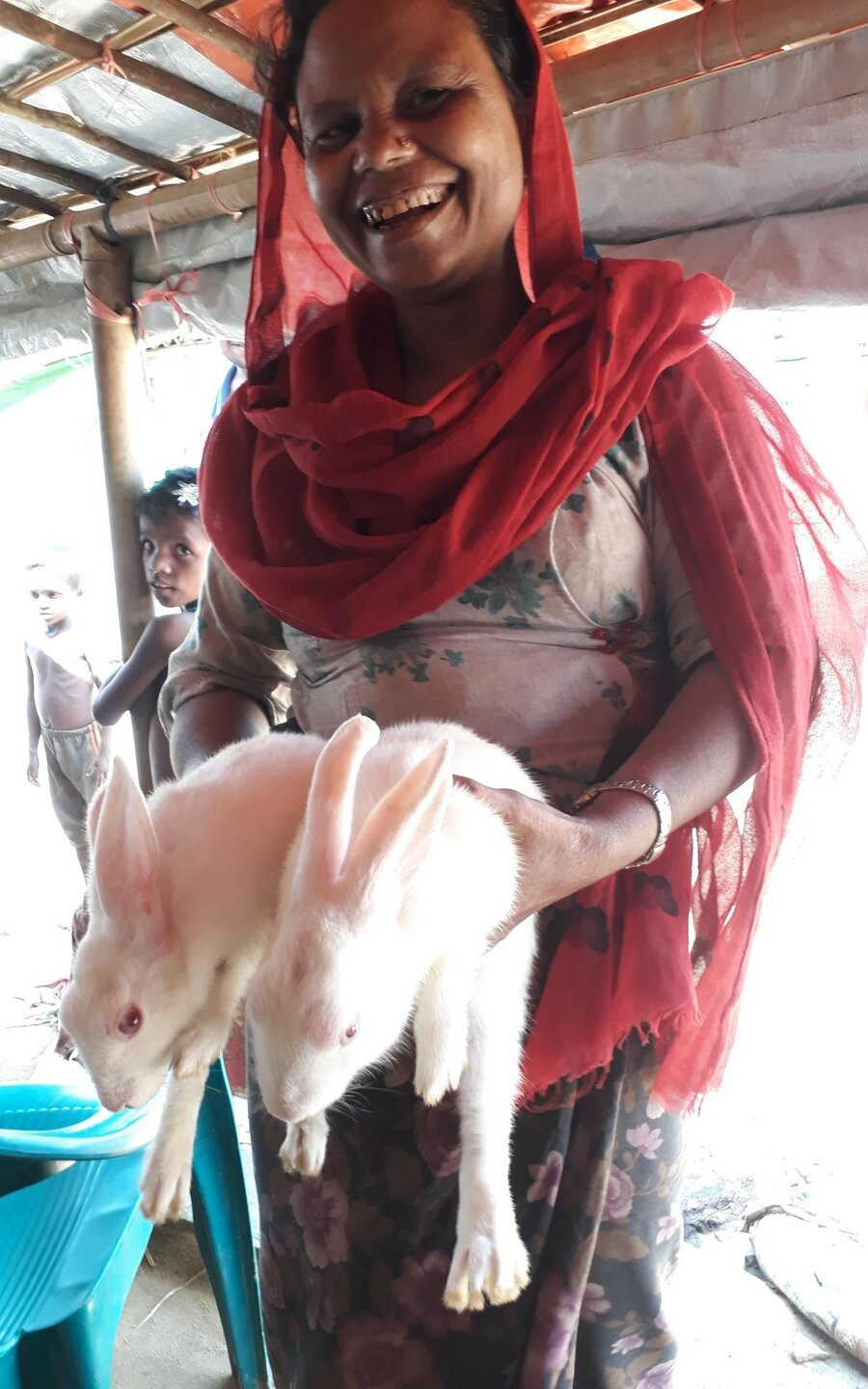
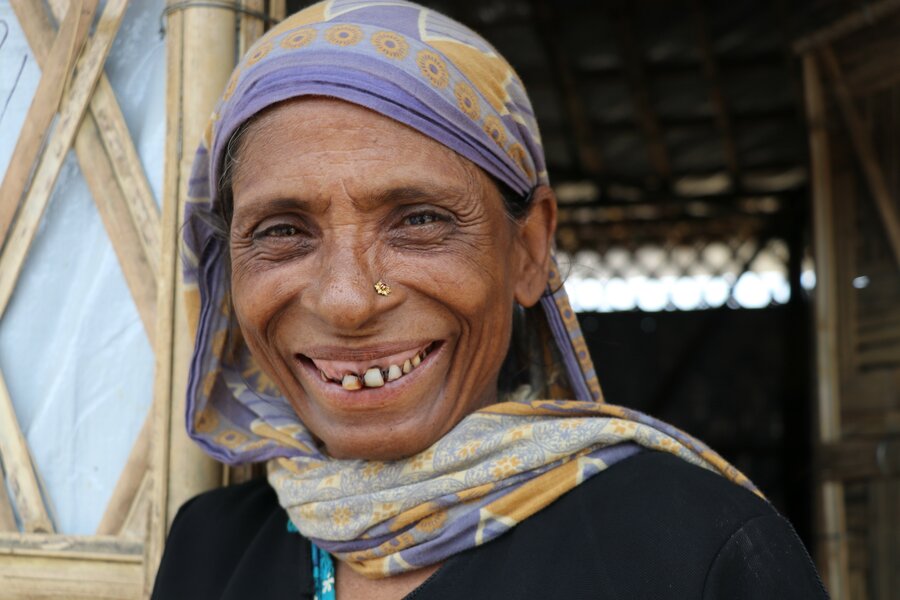
Sahara and I hug now when we see each other. I first met her in June at her new shelter where she lives with her two grandchildren, 5 year-old Jashim and 4 year-old Washim. The children lost their parents in Myanmar, and now they have no one but Sahara. "My daughter — their mother — was killed in front of me. I was living in camp 6 Kutupalong, but after the continuous heavy rain, my house was flattened in a landslide. This is my second chance here. We survived.''
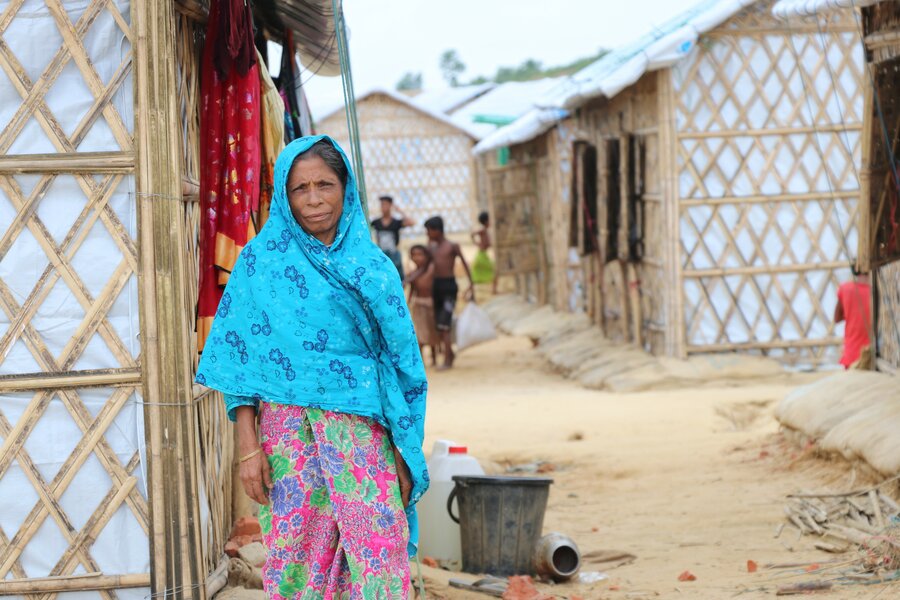
She told me she feels safe now she lives on flat ground. Do you want to go back to Mymanmar? I ask. "No. Never. I would sooner you put me in front of a truck and let it drive over me. You can kill me here but don't send us back.''
Host communities were the first responders a year ago, many of whom are negatively impacted by this sudden influx of refugees. In fact, local residents have become minority in the 2 sub-districts where these refugees are living. Food and firewood prices have increased, large tracts of forests have disappeared to meet the needs for cooking fuel. Competition for jobs is high. WFP is providing cash-based assistance to 20,000 vulnerable women as part of an integrated livelihoods programme. Many of these people have provided refugees with shelter and food and now require our continued support. These women will also get small business training and receive start-up grant for income-generating activities.
I work with a wonderful and dedicated team in Cox's Bazar and most of all it is our national staff who have worked tirelessly to make sure we have enough cars, the internet works and supplies and food get to our beneficiaries on time. They too have their own stories to tell.

A year ago when people started arriving in Cox's Bazar during the Muslim Eid holiday, local residents showed immense generosity. Our staff heard countless stories of locals sharing the special food they had prepared for the festivities with the hungry new arrivals. It is Eid once again and the refugees are thankful to the Government of Bangladesh for all their kindness and support. There is somewhat of a festive mood in the camps this week as families mark their blessings and look forward to a better future for their children.
It has been nearly a year since hundreds of thousands of Rohingya refugees fled violence in Myanmar. WFP has been providing life-saving assistance through food distributions and electronic vouchers, and nutritional products for the prevention and treatment of malnutrition. WFP urgently needs US$ 110 million to sustain food assistance to more than 860,000 Rohingya refugees in Cox's Bazar through January 2019.
